
Stress has unfortunately become a regular part of many people’s lives. In fact, an article in Forbes magazine reported that the World Health Organization has called stress the “worst health epidemic of the Twenty-First Century”. The American Psychological Association reports that over 50% of Americans suffer from stress for various reasons. Additionally, 91% of adult Australians have reported that they feel stress in at least one area of their life. According to the Health and Safety Executive, 12.5 million workdays are lost each year in the UK due to work-related stress.
Stress can eventually lead to physical, mental, and emotional problems. It can affect your eating and your sleep, as well as a number of other things. But let’s face it, stress can’t be avoided. The good news is that it can be managed with a proper diet, a good night’s sleep, and a regular exercise regime. This includes yoga and meditation, both of which are recommended by doctors, stating it is a viable option to manage stress.
What is Stress?
Stress is the feeling you get when you are overloaded with things to do. It is physical, mental, or emotional strain that you feel when you are distraught about something. Quite often it is something that is most likely not under your control. When we feel stressed, our bodies react by releasing chemicals into the blood that give us more energy and strength. It puts our body in ‘fight or flight mode’ which creates adrenaline to prepare us for physical action. This can be both a good thing and a bad thing, keeping in mind that not all stress is bad. It can often cause us to become more productive and successful as it allows us to quickly respond to a situation. It can also help us to survive dangerous situations.
Unfortunately for many, stress is not a positive thing, but a negative affliction that causes health issues. It leaves you with negative feelings and emotions. This happens because of external factors that are completely out of our hands. This constant stress can cause heart attacks or ulcers if not managed properly. Stress can sometimes cause dysregulation, which then locks the surge of energy into the nervous system. Reactions to bad stress include headaches, hypertension, skin problems, and gastrointestinal issues.
There are three different kinds of stress, each of which has different characteristics, symptoms, and durations; acute stress, episodic acute stress, and chronic stress.
Acute Stress
This is the most common form of stress and is normally short-term. It comes from pressures and demands in current moments and is fortunately in small doses. It is often exciting but can also exhaust you after the moment of stress is gone. An example of acute stress is if you run a marathon that leaves you exhilarated while at the same time drained. That same marathon will then leave a wearing feeling on you later in the day. Going beyond your limits can leave you with injuries. This overloading yourself with short-term stress can lead to headaches, psychological distress, and digestive problems.
In short, it is a list of things that have gone wrong in your life, all of which are short-term. It can be caused by things like an argument, a deadline or a financial obligation. Fortunately, acute stress is both short-term and recognizable so it usually doesn’t do too much damage or cause long-term stress. It is a normal part of most people’s lives at one time or another and is easily manageable. Common symptoms include:
- Emotional distress; irritability, anger, depression or anxiety – the three stress emotions.
- Muscular problems; headaches, jaw pain, back pain, and muscular tension.
- Stomach, bowel and gut problems; heartburn, diarrhoea, constipation, flatulence, acid stomach, and irritable bowel syndrome.
- Temporary over-arousal, leading to elevated blood pressure, sweaty palms, rapid heartbeat, dizziness, shortness of breath, heart palpitations and chest pain.
Episodic Acute Stress
This is when acute stress becomes a regular part of your life. You always feel rushed, disorganized and pressured. If something can possibly go wrong, it does. It is usually caused by taking on too much or having too many responsibilities and/or demands. Episodic acute stress is when you feel like you are perpetually in a state of acute stress.
Most people experiencing this kind of stress have over-aroused reactions, like a short temper, anxiousness, irritability and feeling tense. People who suffer from episodic acute stress often have a lot of nervous energy. They are always in a hurry, they tend to be abrupt and sometimes come across as being hostile. It can cause relationships to rapidly crumble as others will often respond with hostility. This is especially true in the workplace because you’re creating stress for others and potentially not acting professionally.
Episodic acute stress can also come from endless worry. When in this mode you see disaster everywhere and devastation in every situation. The world is an unrewarding, dangerous place and you are always waiting for something terrible to happen. This can cause depression and anxiety, as well as chronic stress.
The symptoms of episodic acute stress will cause you to exhibit signs of extended over-arousal. This includes persistent headaches, migraines, chest pain, hypertension, and heart disease. Treating episodic acute stress usually requires professional help. Unfortunately, some people that suffer from this stress see nothing wrong with the way they go about their lives. They blame all of their problems on others or external events instead of dealing with them. They often perceive their lifestyle and traits as a part of who they are.
Chronic Stress
This is the most harmful kind of stress, as it is often long-term or caused by too many stressors happening one after the other. Chronic stress is grinding and wears on you day after day. It can destroy your body, mind, and life. This kind of stress is caused by; ongoing poverty, an unhappy marriage, a dysfunctional family or a job you hate going to.
Chronic stress appears when you can’t see a way out of a horrible situation. It’s the stress that is brought on by relentless demands and pressures for what is perceived as an endless period of time. People with this kind of stress feel like there is no hope and they give up on finding a solution.
Sometimes chronic stress can arise from traumatic, early childhood experiences that are internalized, staying painful and forever present in the body. In this case, it has a profound effect on your personality, making you view the world as a place of unending stress. When this happens, deep-seated beliefs about oneself and one’s personality must be redeveloped, which requires a lot of self-examination and professional help.
One of the worst things about chronic stress is that when you have it, you get used to it, often forgetting that it is even there. It is ignored because it’s always there and has become familiar. It is long-term stress that can lead to depression, heart attacks, strokes, and violence. Sometimes it leads it a complete breakdown or suicide.
How Can Yoga Help You Manage Stress?
Yoga has always been known as a way to calm the mind through the combination of movement and breath. This, in itself, is a way to help manage stress. Even further benefits have been found because yoga has been proven to have a positive effect on the parasympathetic nervous system. This reduces the amount of oxygen that your body needs, resulting in the leveling out of your heartbeat and blood pressure. In short, this system controls the stress response systems. One of the main principles of yoga is to connect the body and mind. Stress can affect both and yoga helps to balance and connect the body and mind. The more you practice, the more able you are to tolerate stress on your mind and on your body.
An article written by cardiologist Dr. Joel Kahn explains the concept of how yoga helps to regulate the heart further. In the article, he explains how a regular yoga practice can have a positive effect on the nervous system. It is done so by training the nerve supply to your heart and arteries. This occurs through the breath and heart rate variability (HRV). The change in a heartbeat is due to changes in the parasympathetic nervous system. HRV is high when we breathe deeply, which then reduces stress. He goes on to talk about an eight week Hatha Yoga program that involved 12 participants. Nine of them showed a significant increase in HRV, making them more capable of dealing with stress. He also mentions a study that was done with 90 pregnant women, half of which participated in daily yoga classes. The women that did yoga showed a reduction in stress, while those that did not practice had no change at all. In fact, by the 36th week, their HRC increased by 150 percent.
A study that was conducted by the Department of Physical Education at Brooklyn College, City University of New York provides further proof. Eighty-seven college students participated in the study. Some took two swimming classes, some did a yoga class and some had a lecture-control class. The participants that took the yoga class had a greater reduction in confusion, anger, tension, and depression, with numbers being even higher in men. Adults can also reap the benefits of yoga for stress management, as shown in a study that was done by the Department of Rehabilitation Sciences at The Hong Kong Polytechnic University.
In addition to its positive effect on the heart, yoga can help manage stress in other ways as well.
Relaxes the Body & the Mind
When practiced correctly, yoga can be extremely soothing, reducing tension and relaxing the body. Yoga also helps teach us the art of letting go, which relaxes the body. This is especially true when connecting with the breath, as it normalizes your heart rate and blood pressure.

Stress affects the mind. Yoga can help teach you to focus on one thing at a time; mainly the task at hand. In this way, alone yoga for stress management really works. Over time, you will learn how to control your mind and become more aware of your breath.
Develops a Connection Between the Mind, Body and Soul
Through a combination of breathing exercises and asanas (poses), it is very possible to connect the mind, body, and soul. When they are connected, there’s a sense of harmony and comfort in our lives. When these things are imbalanced, the body sends signals that are similar to those experienced when under stress.
A regular yoga practice will teach you how to feel each movement of each pose and to listen to your body. It will also encourage you to be in the present moment, which will result in a more mindful way of being in your life. This alone is a great way to manage or ward off stress.
Releases Emotional Energy
Negative emotions can build up inside of you, especially if not expressed. This can then lead to stress. Emotional energy, when built up, is often released in negative ways. Examples of this include; shouting at your partner, yelling at a waitress for getting your order wrong or snapping at a co-worker. When you practice yoga, emotional energy is released in a positive way. Most people are not even aware of the emotions that are sitting inside until they’ve been released.

If you ever feel like your neck or shoulders are tense, this can be a build-up of negative energy. Many yoga poses release this tenseness from your body, which then releases negative emotional energy. Yoga also increases the energy throughout your body, creating positive emotional energy.
What Style of Yoga is Best for Stress Management?
There are so many different styles of yoga out there today ranging from slow-paced to high-energy. In fact, there is such a diverse range of yoga styles that it is often hard to select what style works best for you whether stress is an issue or not. Still, there are styles that are better for stress management than others. If you are hoping to do yoga for stress management, these are the best styles.
Restorative Yoga
Restorative yoga is designed to allow you to fall into a deep state of relaxation but doing a very limited amount of poses, holding them for an extended period of time. It resets your nervous system. It is known to be beneficial for anyone recovering from mental health issues or stress-causing life events. This includes things like the death of a loved one, a divorce or even a holiday.
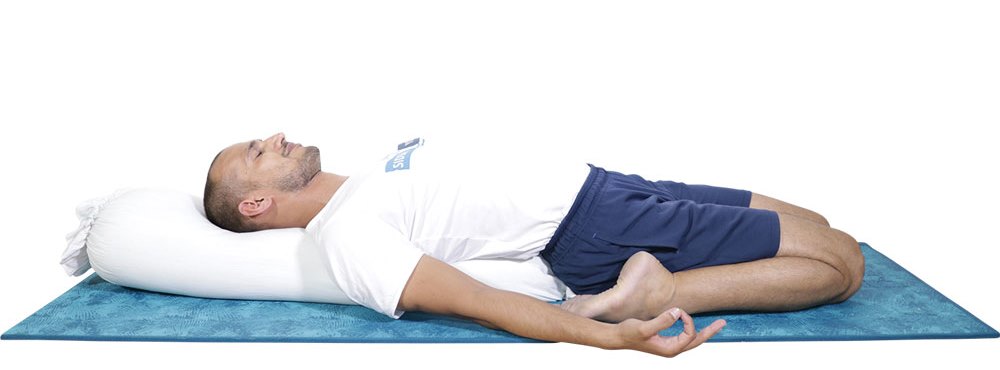
Restorative yoga is based on the theories of BKS Iyengar, a man known as the pioneer of using restorative yoga to help people that were recovering from injuries. Numerous props are used, like blankets, blocks, bolsters, and straps. Unlike other forms of yoga, with this style, you don’t flex your muscles or utilize them in any way. Instead, you are completely relaxed, using the props to support your entire body. It is one of the most relaxing forms of yoga you can do.
Yin Yoga
Like restorative, yin yoga is a quiet, meditative style of yoga with the idea of giving in to gravity. It is a slow, relaxing form of yoga that relieves tension and teaches you to slow down or be still. Yin yoga brings positive stress to the joints, which increases flexibility. But this is done in a relaxing way much like restorative yoga. It involves holding poses for several minutes. One main difference is that with yin yoga you don’t need props. They can be used, but are not a necessity.
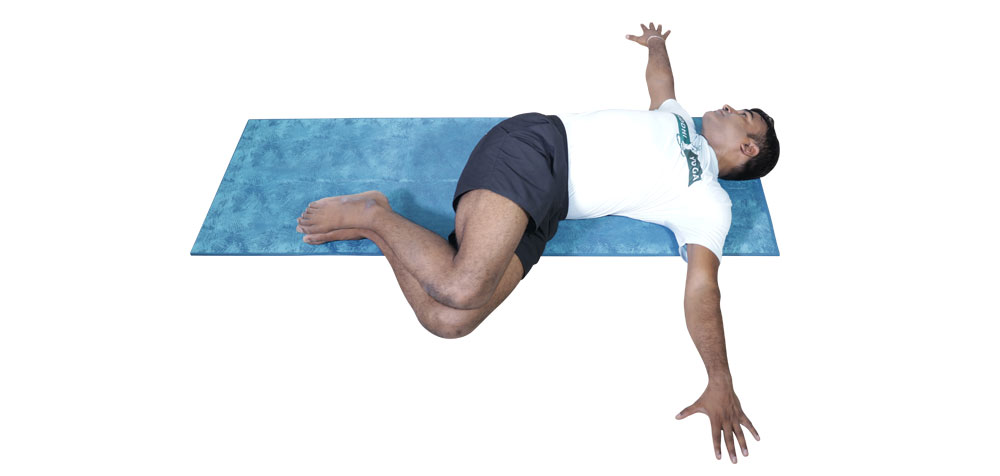
Yin yoga is also known as Taoist yoga as a result of its connection to the Chinese meridian system. It focuses on the fascia and on joints, releasing stress and tension from them. There is a lot of focus on the breath and gravity.
Hatha Yoga
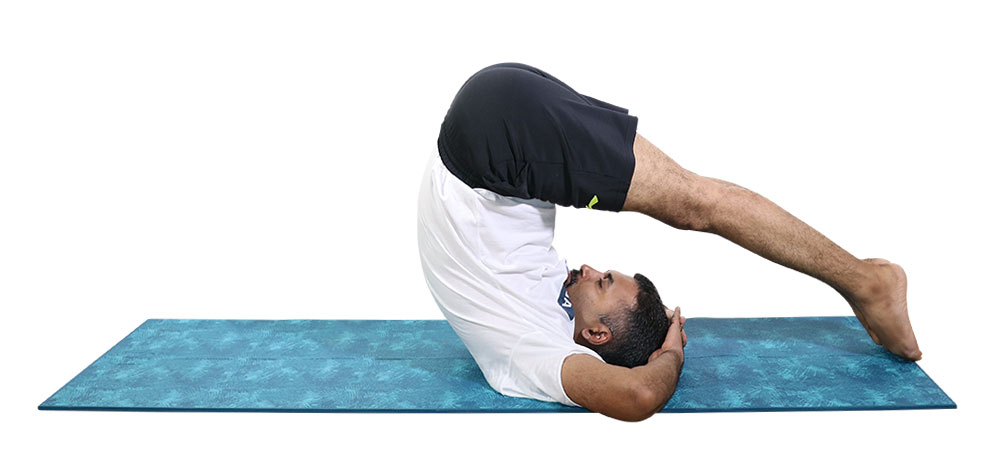
This is one of the most traditional styles of yoga. In fact, many other forms of yoga stem directly from hatha yoga. This style focuses on balancing the entire body through movement and breath. It deepens your body awareness and your body-mind connection, helping to manage stress. It works on all body parts, withstanding and sitting poses being done in conjunction with uijjayi breathing.
Vinyasa Yoga
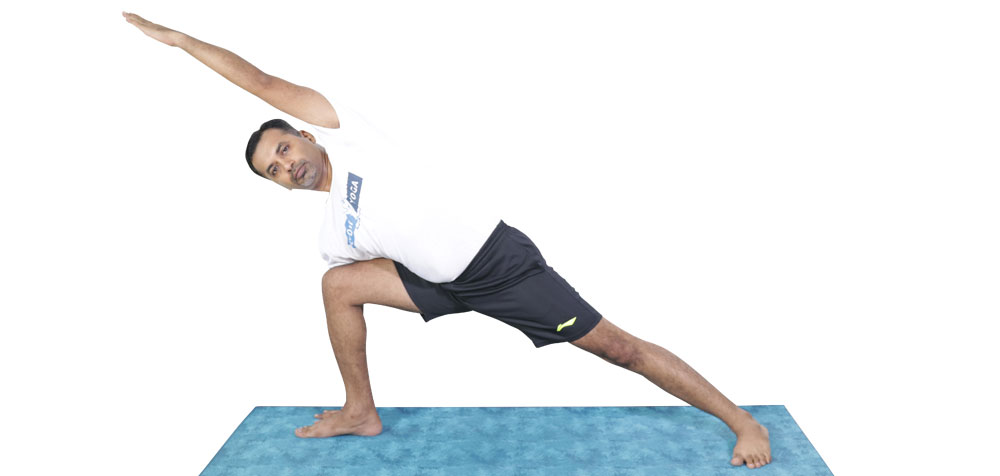
Vinyasa yoga uses the same asanas as hatha yoga, but you move from pose to pose in a quick, flowing way. The asanas are very much Hatha-based, but the movement is a direct influence of Ashtanga yoga. It offers more of a cardio workout than most other styles of yoga, with a smooth transition between poses. It is a good option for stress management because it takes a lot of focus and completely clears your mind from anything other than what you’re doing. This teaches you to focus on what you are doing now, rather than stressing about various things all at once.
The Benefits of Yoga for Stress Management
It has been proven that yoga for stress management works as it combines a number of stress reduction techniques all into one. This includes stretching, fitness-type exercise, meditation, and concentrated breathing. Here are some of the benefits of yoga for stress management:
It Lifts Our Spirits
In most cases, yoga will affect your mood in a positive way by lifting your spirits and giving your mind a break. This will then put you in an all-round better mood and should, therefore, help with stress management. It also, as mentioned previously, improves the connection between your body, mind, and soul, which will give you better awareness of yourself. The more we practice, the more confident we become in ourselves and our body. This then puts you in a better mood on a day-to-day basis, which results in the reduction of stress.
Gives us a Sense of Calm

Practicing yoga requires mind control and focusing on the now. You concentrate so much on your body and what it is doing that it often brings calmness to your mind. While practicing, you’re also concentrating on your breath, which disengages you from your thoughts. The more you do yoga, the more these skills will develop and the more your stress management will improve. This will also make situations in your life easier to deal with, as you will learn how to calm your mind and not let stress take it over.
Improves Sleep

It is a proven fact that yoga can help with insomnia and will also allow your body to become completely relaxed in order to have a good night sleep. Sleeping and stress are closely connected. We are stressed if we don’t get enough sleep and also don’t sleep when we are stressed. Yoga can help you sleep peacefully, which is great for fighting off stress. It teaches us to keep both the mind and body relaxed, allowing us to sleep and deal with stress better. The more yoga you practice, the more your parasympathetic nervous system is stimulated. This means that you will feel relaxed in your body and your mind, resulting in a much better sleep.
The Best Yoga Poses for Stress Management
It is important to use your breath when doing yoga for stress management. This helps you to achieve the best effect from your practice. Proper breathing combined with a few asanas every day will go a long way. Here are some one the best yoga poses for stress management.
Vajrasana
Although not everyone can do this, vajrasana (thunderbolt or diamond pose) is one of the best asanas for stress and tension. It keeps the spine erect to allow for deep breathing while your palms are on your knees. Many people get into this pose for meditation due to the spine being straight and the chin parallel to the floor. It is also great for the digestive system which is effected by stress.
Padmasana
Like vajrasana, padmasana (lotus pose) is also an assumed meditation pose, as it is known to calm the mind. It also stimulates the pelvis, bladder, abdomen, and spine, all of which are areas that can be effected by stress. This is also the pose that many take for pranayama (breathing exercises), which we will discuss next.
Balasana
Balasana (child’s pose) is a restful pose that is often done between two more challenging asanas. It is a great pose for calming the brain and helping with stress management. It is also great for back, neck pain and shoulder tension; the three places where most people carry the most stress. Balasana can be done on its own or with a bolster or blanket. The most important thing about it is being comfortable and feeling as if you are relaxed.
Paschimottanasana
Paschimottanasana (seated forward bend) is great for calming a distracted mind. It can completely relax your brain and relieve stress and mild depression. It also stimulates your internal organs, soothes headaches, reduces fatigue and has therapeutic effects for high blood pressure.
Sirsasana
The king of all yoga poses, sirsasana (head stand) teaches you to completely clear your mind and focus on what you’re doing. When you’re in this asana, if your mind wanders and you think of something else, you will fall. You need to keep your mind focused on the pose, your breathing and your body in order to be able to stay in it. When in sirsasana, your blood flows the other way, refreshing your pituitary and hypothalamus glands. These glands regulate other glands in the body, so when they are refreshed, it is great for your overall well-being. It also flushes your adrenal glands, which helps with stress and depression.
Yoga Sequence for Stress Management
This gentle yoga sequence is excellent for relaxing the mind and the body and connecting to the breath.
Savasana (Corpse Pose)
Lie on your back with space between the heels of your feet. You want your palms facing up, your shoulders down and your neck long. Relax your body and observe your breathing. If you have back pain, bend your knees.
Apanasana (Knees to Chest Pose)
Slowly bend your right knee to your chest. Inhale and interlock your fingers at your knee, exhale and push your knee to your chest. Make sure that your shoulders and face are relaxed. Keep your awareness on your breath and stay in this pose for as long as you want. Inhale and bring your arms down, exhale and stretch your leg out. Relax in savasana and repeat with the left leg.
Then bend both knees to your chest. Keep focusing on your breath as you press your lower back to the floor. Inhale and interlock your fingers around both knees, exhale and push your knees towards your chest. Inhale and bring your arms down, exhale and slowly bring your legs out. Rest in savasana.
Supta Buddha Konasana (Reclining Bound Angle Pose)
Bend your knees and open your legs, bringing the soles of your feet together. If you feel lower back strain then put a block or bolster under each leg. Stay like this for as long as you want but remember to observe your breathing. Inhale and bring your knees back in, exhale and straighten your legs back to savasana.
Setu Bandha Sarvangasana (Bridge Pose)
Bend your knees so that they’re in line with your ankles and hip-width apart. Inhale and lift your hips up to the ceiling as high as you can. Keep your neck long and be sure that your feet are facing forward. Observe your breathing and relax your body. Inhale, then exhale and come down one vertebra at a time.
Viparita Karani (Legs-Up-the-Wall Pose)
Bring your legs straight up against a wall so that your body is perpendicular. You can also put your legs on a chair or just lie in savasana. Make sure that your palms are facing up and your entire body is relaxed. Connect with your breathe. Hold this pose for up to three minutes, then slowly come back down to savasana.
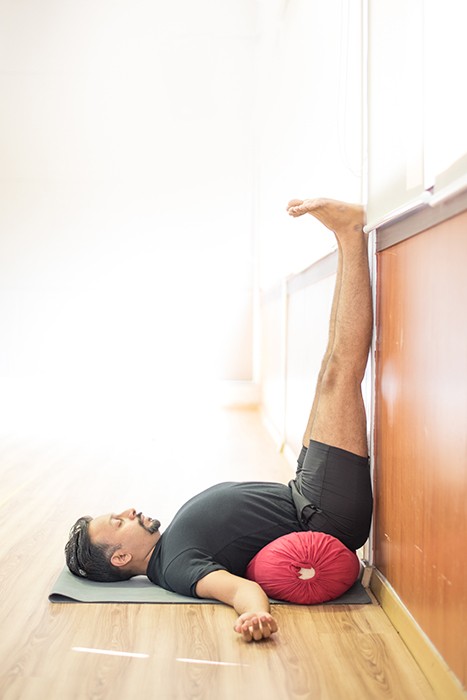
From savasana, give yourself a big hug and then put your arms down to your sides. Stay here for as long as you’d like. When you’re ready to come up, bend your knees and roll to your left side. Then slowly come up.
Pranayama for Stress Management
Pranayama translated means ‘to extend the vital life force’ or the prana. It is the practice of breathing techniques to cleanse, purify and relax the body and the mind. Patanjali, who wrote the Yoga Sutras, describes it as a ‘practice of consciously regulating breath’. This can be done in many different ways, including suspending exhalation, suspending inhalation, having equal amounts of inhalation and exhalation or changing the time or length of each breath.
Pranayama has been proven to be an excellent source for stress management, as well as for improving cardiovascular functions. It calms your mind, connects you with your breath and promotes sleep. These pranayama exercises tend to be the best for stress management.
Nadi Shodhana Pranayama
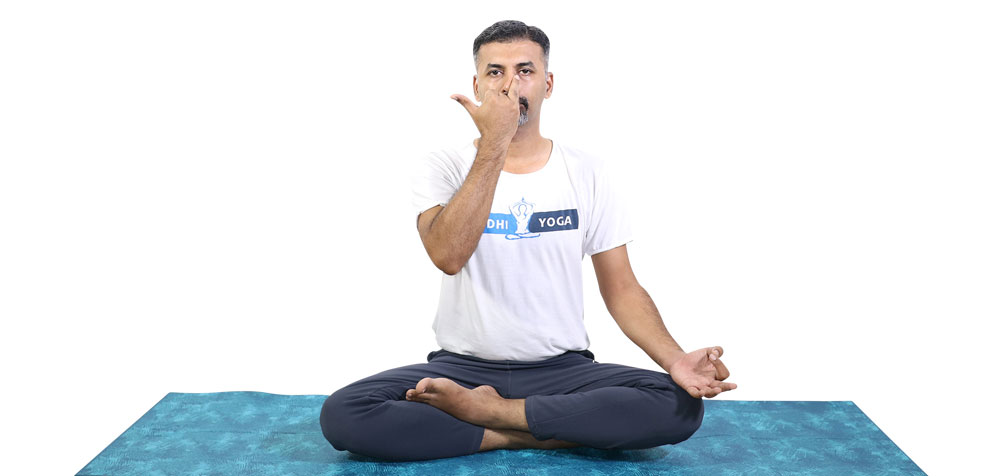
Also known as alternate nostril breathing, nadi shodhana encourages calmness and tranquillity. It clears any blockages in your prana (life force) that have been caused by toxins and equalizes the breathing on each side of your nose/nostril. This means that your flow of prana is balanced on each side. It also purifies your blood and enhances the efficiency of your brain cells, allowing them to function to their full capacity. Nadi shodhana also cleanses your sympathetic and parasympathetic nervous systems, which we already know is excellent for managing stress. Equalizing the flow of prana and cleaning the nervous system fixes any imbalances that have been caused by stress. This results in a positive influence to your stress response activity, bringing stress levels back to normal.
Ujjayi Pranayama
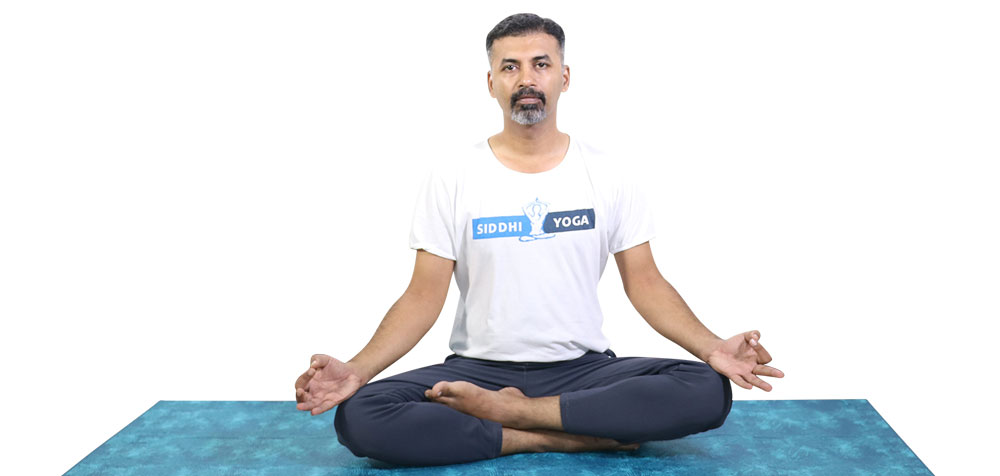
Ujjayi (victorious breath) is a diaphragmatic breath that is done during asana practice. It acts on the carotid sinuses at the back of the throat; next to your main blood supply to the brain. The carotid sinuses detect blood pressure, so when it rises, it sends a message to the brain. The brain then tells the heart to slow down, which brings the blood pressure down. If your blood pressure is too low, the opposite happens; your brain tells the heart to speed up. Practicing ujjayi puts a little bit of pressure on the carotid sinuses, which helps to slow the heart down. When we are stressed, our blood pressure often rises, so this is a great stress-aid.
Yoga – A Great Stress Management Tool
Yoga is fantastic for stress management, as it combines numerous techniques, all of which are great for helping with stress. Even by doing just one yoga class, you will feel the positive effects that it has on your mind and your body. You will feel energized, relaxed, and confident the minute you walk out the door. It’s clear how good yoga is for your body, mind, and soul. Yoga for stress management can be done by anyone at any time of the day.
Be sure to subscribe to our newsletter and read our blogs to get more tips on practicing yoga poses that will help you manage stress. You can also enroll in our various online teacher training courses, where you will find a great opportunity to learn yoga deep inside. We have many useful instructions on poses for other health issues you might be facing.
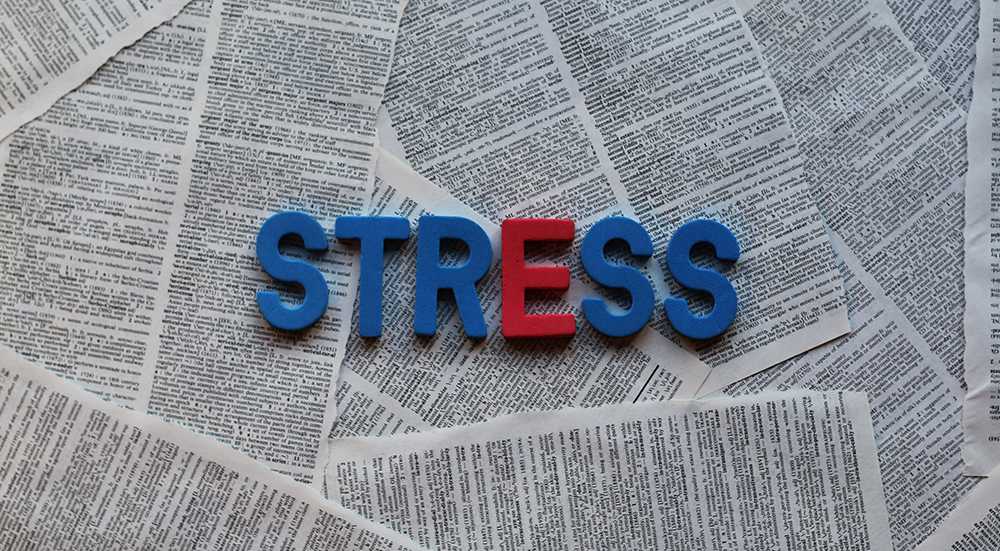

Responses